

Click to read general information about afghans



Buy a pattern
for this afghan
on the order form
 Buy now
Buy now


HAVE IT ALL WAYS
Have you ever wondered how many different ways you could arrange four colours?
This afghan shows the answer. The 24 squares are all different. It is a visual representation of the solution to various mathematical problems, such as ‘How many ways could four people sit around a dinner table?’
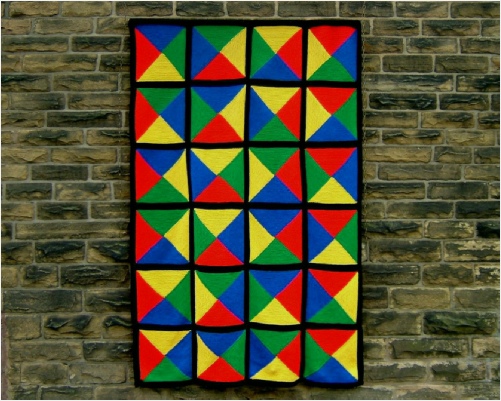
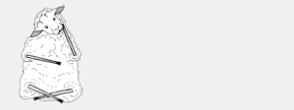
Scroll down for more information about
Have It All Ways

RELATED DESIGNS
PERMUTATION AFGHANS
PERMUTATION CUSHION
PERMUTATION SCARF

CONSTRUCTION INFORMATION
Each of the 24 squares is knitted in one piece, using one yarn at a time. The squares are then stitched together.

KNITTING INFORMATION
Use any yarn and needles of your choice, in four distinctly different colours.
The pattern also shows another arrangement which results in a square afghan.
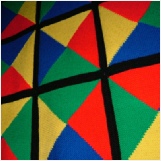
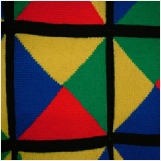
Click to see
larger pictures

Have It All Ways shows all the possible ways of arranging four colours so that no two squares are the same. This represents exactly the same problem as asking how many ways four people can be seated round a table or which order you might eat four items from your lunch box.
When given such a problem many pupils approach it in a completely random manner then find it difficult to recognise when duplicates have been included. The design tries to present a logical order for being sure that none have been missed and none used twice.
Looking across the rows of squares it can be seen that the only difference between one square and the next is that it has been rotated. There are only six totally different squares. Looking down it can be seen that some colours are consistently in the same positions while others are moved around until all the combinations have been found.
The number of combinations for four colours is
4 x 3 x 2 x 1 = 24
The cushion version came much later as one of a number of designs which were reduced to a size which many people found much easier to make. It has twelve rectangles (not squares) on the front and twelve more on the back. Turning the cushion side-
On the scarf version the squares can be seen from both sides and either way up. It can easily be folded so that only six different squares are apparent.
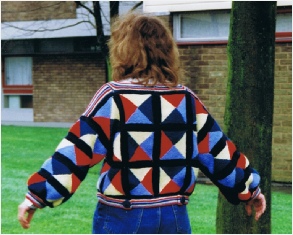
This jacket was made by Julie Gibbon, using Woolly Thoughts methods and the mathematics of Have It All Ways.